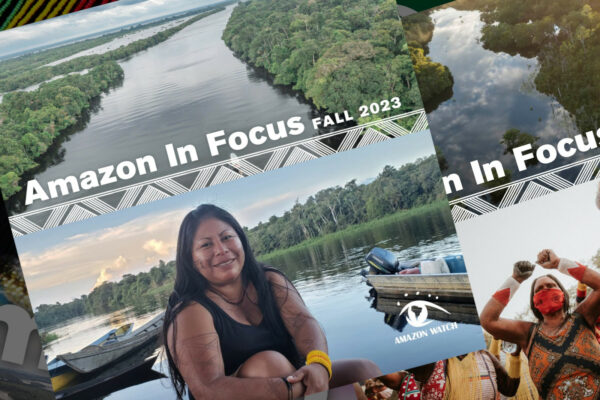Indigenous people from around the world are meeting in Anchorage, Alaska, this week to discuss climate change – which has led to conditions they didn’t create but that they often suffer from disproportionately, many said.
And as the world negotiates a successor to the Kyoto Protocol, indigenous groups say they want their voices heard. Delegates at the Anchorage conference plan develop a set of recommendations to present in Copenhagen in December, at the meeting of the Conference of Parties to the U.N. Framework Convention on Climate Change.
“The issue of climate change for us is really an issue of justice, an issue of rights,” said Fiu Elisara, director of the O Le Siosiomanga Society, a Samoan conservation group. “We have been asked to adapt to climate change when we have contributed little to its cause.”
That’s a hard pill to swallow for Samoa and other small Pacific Island States, whose “liquid continent” could be drowned as the world’s seas rise, Elisara said. “Climate change for us is an issue of life and death,” he said.
Elisara is among approximately 300 delegates expected to attend the five-day conference, which began yesterday in Anchorage. The Inuit Circumpolar Council-Alaska, which represents Alaska’s native Inupiat, Yup’ik and Cup’iq communities, is hosting the meeting.
The state’s native communities are already grappling with climate change.
Rising temperatures are thawing sea ice and permafrost, leaving at least 184 native settlements increasingly vulnerable to erosion and flooding, according to a recent Government Accountability Office report. Some of the hardest-hit communities are hoping to relocate, despite the steep costs. Tiny Newtok, population 321, has secured new land 9 miles south of its current location. But making the move could cost up to $130 million, according to the Army Corps of Engineers.
Farther south, the Inupiat whaling community of Kivalina is hoping to use a novel tactic to finance its own relocation, estimated to cost between $95 million and $400 million. Village leaders filed a lawsuit last year against two dozen major oil, coal and power companies, seeking damages for global warming.
“I think it’s very appropriate this summit is occurring here in Alaska,” said Stephen MacLean, a member of Alaska’s Inupiat community and conservation program director with the Nature Conservancy.
MacLean said the Arctic’s native people are dealing with shifts from frozen tundra to landscapes dotted with shrubs, and with disappearing wetlands and sea ice. Groups that have long lived off the land worry that the environmental changes will spell an end to native hunting and fishing practices as wildlife habitat disappears.
‘We are the true conservationists’
At the same time, indigenous communities believe their traditional practices can offer lessons to nations hoping to reduce emissions and adapt to unavoidable changes in the climate. “We are the true conservationists,” said Egberto Tabo of the Coordinating Body of Indigenous Organizations of the Amazon Basin.
Johnson Cerda, a Quichua leader from Ecuador who works with Conservation International, said his native forest offers a stark example of the environmental knowledge held by indigenous communities.
“The only remaining forest in my region in the Ecuadorian Amazon is located in indigenous peoples’ areas,” he said. “It’s a clear indication that our traditional practices have been effective in protecting forests and biodiversity.”
Meanwhile, Cerda’s group, the Quichua of Ecuador, is already grappling with climate change. Dry seasons in their Amazon home are lengthening, he said.
“In dry season, the leaves make a lot of noise,” said Cerda. “It’s good for hunters, since they can notice the animals from farther away. But at the same time, the animals notice the presence of people coming through the dry leaves.”
The Quichua are also concerned about changes in their rainy season, he said. They depend on a large annual flood to connect their major river to a nearby lake, in effect restocking fish and other marine species.
“In the last year, we have only had three small floods, and no water from the river went to the lake,” Cerda said. “We’ve seen a decreased quantity of fish in the lake. That’s another concern, because the rainy season is not as usual.”
Elisara said his fellow Samoan natives are less interested in building infrastructure to deal with sea-level rise, the approach taken by the country’s government, than in preserving and restoring mangrove forests and natural ecosystems to improve the resilience of Samoa’s coasts.
“We are very much involved in our own country to try and prove to the government that a lot of loans they are taking out from the World Bank and others to build sea walls – they are not the way to grow,” he said.













